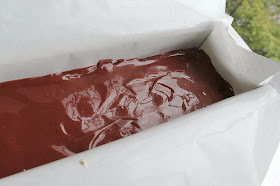
These handsome deer bars are great for the season, and they're scented with my favorite fall fragrance: Vanilla Oak. The scent is popular with both men and women and has notes of Light Camphor, Italian Bergamot, Cassia Root to provide flighty top notes, with strong middle and base notes of Sweet Heliotrope, Soft Amber, Warm Oak, Sandalwood, Patchouli and Creamy Vanilla.
Supplies:
Cappuccino Mica
Light gold mica
Green chrome oxide
Clear melt-and-pour base (1 pound yields three deer bars)
White Tailed Deer Flexible Mold
Vanilla Oak Fragrance Oil
Vanilla Color Stabilizer Use one tablespoon per pound of M&P soap.
Rubbing alcohol
Dropper
Clean Up Tool
Melt 1 pound of soap base and add 4 ml Vanilla Oak fragrance oil and one tablespoon Vanilla Color Stabilizer. Separate a small amount (about 1/4 cup) and color with Cappuccino Mica. Use a dropper to squeeze brown soap into the deer section. Use the clean up tool for areas that may have spilled over, particularly around the antlers.

Color 1 cup of soap with light gold mica. Remember, the soap base already has scent and VCS in it. You will have to keep melting it down as you work. Spray the hardened deer layer with rubbing alcohol and pour a layer of light gold soap over the deer detail. Tip: Putting a white or light colored layer behind the dark deer will create contrast and pop out the color in the deer. Don't pour dark behind dark or you won't see the detail.

For the final layer, color the rest of the soap base with one scoop light gold mica and one scoop chrome green oxide. Spray the light gold layer before you pour the green so the layers stick together, and make sure the layer you are pouring onto is hard.
 Let harden and you're done! You can use other types of clear bases for different benefits, like Aloe Vera, Honey, or Shaving base for example. The Vanilla Color Stabilizer will keep the soap from going brown from the Vanilla Oak fragrance oil.
Let harden and you're done! You can use other types of clear bases for different benefits, like Aloe Vera, Honey, or Shaving base for example. The Vanilla Color Stabilizer will keep the soap from going brown from the Vanilla Oak fragrance oil. 
















